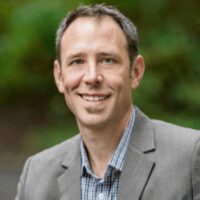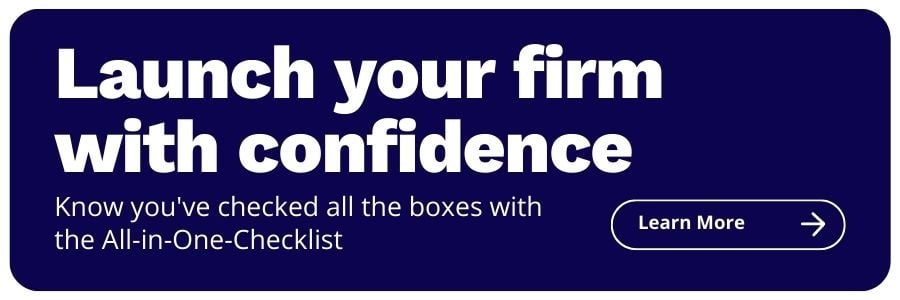Launching Your Own RIA: Advice from Advisors Who Took the Leap
Share this
"What's it really like to start a fee-for-service financial planning firm?"
We hear this question often here at XY Planning Network, and we've published many blogs about this very topic. Like this blog, and this one, and this one too.
Rather than author another piece in our own words about what you'll encounter when you launch, run, and grow your own firm, we thought we'd turn the keyboard over to XYPN members who have been there, done that.
After all, who better to speak about firm ownership than people who actually, you know, own firms?
What It's Like (To Start a Firm) by Ian Bloom, CFP®
I started writing this piece because of someone who you’ve seen linked here before,Meg Bartelt. We were having an amazing conversation under a tree in Hana, talking about what it’s like to be in this moment for me. At the time of writing this, I’m both terrified and excited. It’s been that way since I left my last job. It’s about to be over, things have started moving for my firm in a big way, but I didn’t want to miss capturing this emotion. Starting a financial planning firm from scratch is hard and we aren’t talking about it enough. So here I am, talking about it, because that’s probably the best way to convey the feeling.
“Then you really might know what it’s like…” - What It’s Like by Everlast
Entrepreneurship and self-drive has been something bubbling under the surface for me for a long time. I sold knives during the summer following my freshman year of college, eager to be in control of my income. I sought out an RA job when I discovered that slinging blades wasn't for me. I liked it enough, but disliked the hours. I then participated in an MLM, much to the chagrin of my friends, a few years later. It was all to see what I could build for myself. The latter did not work out, so I got to taste failure, but it left me knowing what it took to get myself to work on my own. So I don’t think it was to anyone’s surprise when I started Open World Financial Life Planning. Granted, this is a real thing I’m building, not a manufactured version of entrepreneurship.
The first few months of starting my firm were a mix of excitement and frustration. There was a ton of ‘creative energy’ flowing through me. I had a strong desire to design, to build, to produce. That’s where the YouTube channel and the Podcast started. I had tons of time and nothing to do with it, so cranking out content was a way to distract myself. That’s where the frustration set in, between trying to manage the transition of some clients and the state regulatory board not approving my firm in a timely fashion, I just wanted to be able to announce my business to the world. I had tons of videos produced (they were bad, but they existed) and I wanted to post them!
Over time that excitement gave way to something entirely different. It only took about two weeks after registration. I would call it dread. Have you ever played a strategy game (anything from Monopoly to Civilization) and seen your loss before it happened? You can see how your opponent is about to win, but they would need to really mess up for you to not lose. That’s the feeling. Okay, so now I’m registered, but I have no idea how to get clients from scratch.
I tempered this feeling and ignored it with action. I began going to some networking events. Three or so a week. I also taught ‘lunch and learns’ at the coworking space I was now a part of. Both were fulfilling, because I was meeting new people, and I had some immediate results in the form of interest. It took a few months (January, and I launched in August), but I started bringing on some clients. That was a huge relief. Phew. I really can do this, with or without Steve.
At my previous firm I was benefitting hugely from the reputation and clout of my mentor, and I now no longer had that cushion, but I was proving to myself that it was possible to do it on my own. That was exciting. All the while, however, I was watching my bank account trickle downward. The start-up expenses for my firm were not great (I measured them about at $1,100/mo, pretty lean), but my cost of living was high for the area. Two cars we’d bought when we had two incomes now seemed like they were eating me alive. That trickle caused anxiety, especially when clients stopped showing up for a while.
In 2019, from May to October, I brought on zero new clients. Talk about anxiety. After talking with other firm owners and being on the other side, I can tell you that this is entirely normal as a phase of growth, but it still terrified me. What if I fail? I had an inheritance, and I’m burning through it every month…
I have since described this feeling as having a 10lb weight on your chest at all times, and when you need to spend a few hundred dollars on something, it goes up to 20lbs. If there’s one lesson I would have you take from this, do not let that emotion come home. I did. It’s been difficult to talk to my wife about money in the past as we have entirely different money stories, and the minor panic made it even worse. I know for a while I made her feel every ounce of my anxiety, and that was not fair to her. She’s her own person with her own problems to deal with.
Then I went to #XYPNLIVE in October and some magic happened (not the trading card game, I was the only one who played that was there…) I focused entirely on being better at planning and blocked out the real world for a few days, and as if by dumb luck, I had three emails for booked potential client appointments on my way out of the conference. I did not make calls, they all just showed up. It was an immense feeling of relief.
I would go on to bring in 4 clients from October to December of 2019, which made me feel over the moon. 9 new clients in 2019, short of my goal, but still growth of over 200% from what I had coming into the year.
That success has continued by the way. I brought on two clients this January, and have three potential new clients in February. It’s been great. I also have a new planner starting with me this month...someone who just showed up in my life and wanted to work the same way I did. We’ll announce him to the world soon, when he’s good and ready.
Don’t think that all this good fortune has changed the feelings though. Feelings aren’t logical. I know that things are looking up from here, but I’m still afraid of another client drought. I don’t think I will ever be fully free of that fear. It’s just less potent now.
Starting a financial planning firm is a rollercoaster. You will experience some pretty low lows. They will feel paralyzing, anxious, and full of self-doubt. The trade-off is that you will experience the highest highs you’ve ever had in your life. The list includes being featured in an article highlighting you as a person and a professional, changing the lives of your clients, having someone say to you “You’re amazing.” and actually mean it.
So do it, whatever that thing is for you. Just be prepared for the emotions. Be comfortable feeling them, to the extent that you can be. Make sure you have some amazing people in your corner too, pushing you to be better. I would not have made it this far without any one of these people.
My List:
- Rebecca Bloom
- Steve Brody
- Jon Bloom
- Sally Bloom
- 'The Friend Group'
- Colin Overweg
- Dwight Detloff
- Isaiah Douglass
- Michael Mustian
- Mike Zung
- Zhi Li
- Taylor Deardoff
- Meg Bartelt
- The Entirety of the Kinder 5-Day Group
- And plenty of other people in my life who challenge me to think differently, act more, and do better.
“You know where it ends, yo, it usually depends on where you start…” - What It’s Like by Everlast
Blaze Your Own Trail NexGen Planners: You Can Create the Business You Want by Eric Roberge, CFP®
“You should take the job. Your business model isn’t going to work, and you’re not going to be able to run a successful firm this way.”
That’s what another adviser told me a few months after I officially launched my own RIA. An opportunity to take a director position at a local financial services startup came my way, and I faced a choice: take the position and its six-figure salary, or stick with my fledgling business with less than $20,000 in gross revenue and work to continue to grow and scale on my own terms.
I started Beyond Your Hammock, a fee-only financial planning firm that specializes in working with people in their 30s and 40s, in 2013 after being an adviser in various other firms since 2007. I saw the huge need that people under 50 had for comprehensive financial planning; I also saw that the financial advice industry largely ignored them.
After trying and failing to convince former employers to let me branch out and bring on younger clients with high incomes and a lot of wealth-building potential, I decided to experiment with a new business model on my own.
When I started Beyond Your Hammock, I offered financial planning on a monthly subscription basis. The fee acted as an annual retainer, but I broke the cost down into monthly payments so clients could easily fit it into their cash flow just like any other subscription or membership service they used.
Today, the idea of a monthly subscription model is not so novel. But when it comes to providing planning to younger clients as a NexGen adviser, there are still a lot of naysayers like the one who told me to give it up and go back to a job instead. I’m grateful for that adviser now, because hearing someone else tell me “you can’t” was the motivation I needed to grind it out and prove him wrong.
If you’re in a similar place that I was back in 2013, I want to give you a different kind of motivation: you can create your own firm from scratch and run a financial planning business that allows you to work with your peers. Beyond Your Hammock is proof that it works.
I started with no existing book of business, no AUM, and no firm-within-a-firm model or business acquisitions of any kind. That was five years ago. Today, the business is not just going strong but growing faster than ever.
Here are some of the lessons I learned along the way that may help inspire, motivate, and guide you to your own goals as a NexGen adviser interested in blazing your own trail.
Starting from Scratch
The first step anyone considering making the shift from working within a firm to starting one should be to sit down and do their own financial planning. Determine what you can afford in terms of startup costs and ongoing expenses. Know what your cash flow and savings look like now and what they must look like post-launch for you to afford your life.
Identify any income sources, new or existing, that can help you cover the gap between starting with zero revenue and bringing on a base level of clients to help sustain the business. Keep in mind that income doesn’t have to come from an industry-related endeavor (although that would be ideal).
When I started my business, I also got a part-time job as a waiter, despite having no previous experience. It allowed me the flexibility I needed to work on the business during my off hours, and enough income to (barely) survive while I launched. Eventually, I shifted into speaking and freelance writing for industry publications and other firms, which helped generate income and was more aligned with my overall work.
Although both side gigs provided an income, the financial planning-related work allowed me to increase my knowledge of various topics and network with others in the profession while also marketing my firm as one that was talking about cutting-edge topics.
Innovate Without Ignoring the Past
When I started my firm in 2013, I put a lot of emphasis on the importance of in-person networking and getting heavily involved with professional organizations like FPA. I wanted to build solid personal connections and an extensive network.
As valuable and powerful as online social networking can be, I don’t think it’s a complete replacement for showing up in person and forging relationships the old-fashioned way. You can want to innovate and push for change in the profession—we need to do this—but that doesn’t mean we need to shun the “old school” firms along the way.
More experienced advisers running traditional firms can serve as excellent partners, mentors, and guides. It would be a mistake to write them off as people who don’t understand you or what you’re trying to build. While some don’t get it, plenty of others see the value and potential of new business models designed to serve a younger, more diverse client base.
Be the Signal, Not the Noise
Inbound and content marketing has been a huge part of how Beyond Your Hammock grew and continues to expand. In fact, all of our prospects today come through inbound marketing channels, including Google search, various content we publish online, our podcast and blog, and being interviewed by and quoted in major publications.
If you’re a NexGen adviser, you’re probably digitally native to some degree. That’s a huge advantage, because using content on the internet, in some form, is likely relatively intuitive. I recommend leveraging inbound and content marketing to attract attention and prospects to your startup firm—just make sure you know how to produce meaningful content so you can stand out as a signal, instead of just adding to the noise.
Don’t shy away from sharing who you authentically are. We saw a massive shift in our marketing when we took the time to develop a strong voice and tone that was uniquely ours. We got clear on precisely who we wanted to reach (and who we didn’t) so we could speak to those people directly and not worry about what anyone else might think.
The businesses that are best at effective marketing are the ones who aren’t afraid to tell a story with their content. That’s because humans navigate the world through stories; people make decisions (like who to hire for their financial adviser) based off emotions and anecdotes, not straight facts and data and information.
Make sure you take the time to develop a strong story and a clear voice for your brand so you can stand out from the crowd.
Share, Don’t Sell (Then Outwork Everyone Else)
Don’t try to sell to everyone you cross paths with. But don’t hesitate to share what you do and why you’re passionate about it.
So many people get caught up in trying to pitch their services when they launch. And I get that: you absolutely need the revenue for the business. The problem is that constantly trying to sell anyone and everyone comes off as desperate at worst, or it makes you sound just like any other sales-oriented person in the industry at best. You don’t want to slip into the image that many forward-thinking planners are trying to shake out of the industry—the pushy, selfish adviser who is only out for their own interests.
Sharing is a different story than selling. Many people miss the opportunity to do that. If someone were to say to you, “What have you been up to?” don’t just say, “not much” and start talking about the weather. That’s your opening to say that you’ve been working on your business.
Explain why you’re motivated to do it and why you think it’s important. Let people see your passion for your work.
And speaking of work, prepare to do a lot of it. There is no getting around the fact that building a business from scratch on your own takes a lot of dedication, effort, and downright hustle. The first three years will be a grind, but if you make it through those years, the odds are in your favor to succeed.
That’s where most people run into trouble: they stop. People who survive and thrive five-plus years into their own business aren’t necessarily smarter, more talented, or more connected, but I guarantee the one thing they had that other people lacked was drive to keep pushing and a determination to outwork everyone else. Bring that same commitment to your firm when you launch, and you’ll still be here in five-plus years, too.
This article originally appeared on Journal of Financial Planning
Transition to Self-Employment: Where is the Water? by John Chesbrough, CFP®
Life is pleasant. Death is peaceful. It’s the transition that’s troublesome. – Isaac Asimov
The latter days of August are usually a rude awakening for my kids and me. After two luxurious months of sleeping in and goofing off (I call it the season of 85 straight Saturdays), we get down to the business of going to bed earlier, sharpening pencils, and preparing lunches. Anxieties creep in as we face the unknown:
“Who will my teacher be?”
“Are my friends in my class?” and
“Why, as the first bell rings, am I standing in front of this class in only my underpants? Oh no!!!! Why didn’t I put on my pants this morning??!! Wait, am I awake?”
Summer to school is a minor transition in the grand scheme, but a transition nonetheless. And transitions are hard.
This Fall, our family’s transition looms more momentous than normal. I am hanging up my teacher hat after 17 years in the classroom, and launching full-time into self-employment. I’ve actually been testing the waters for the last few years – in 2016, we took half a year off to travel through Asia as a family, and last year I worked half-time as a teacher, half-time in financial planner. But this year, it’s the full plunge. I feel as though I am setting forth on an adventure – a trip down a river that I’ve not journeyed before. The exciting side of this transition is the time and mind space I get to dedicate to serving my clients and building Trail Financial Planning. But there is a scary side, a problematic side. I am also leaving the safe shores of being taken care of by others: our family’s health insurance, retirement savings, and tax payments used to be managed by a human resources department. Now, each of those areas is a new challenge, a rapid we must navigate.
As a planner, I often get questions considering self-employment. The financial question is usually “Is it a good idea?” Like most answers in financial planning, the answer is likely “it depends.” In this post, I am going to document some of my experiences, and explore the associated financial planning issues that I must navigate as we transition from pay receiver to pay creator. I imagine it may turn into a bit of a serial blog – a bit like a journal. The first step is to create a paycheck.
What is a paycheck?
This is not complicated. I work. I receive(d) a paycheck. Strangely though, after several years of teaching, my paycheck started to feel disassociated from my work. I did my teaching thing. Behind the scenes and before I saw any money, some money was sent to pay for my family’s health insurance, income taxes, and retirement savings. At the end of every month, the remaining income landed in my bank account, just in time to pay for the mortgage, a student loan payment (yes, I still owe student loans, grrr…), extra savings towards college and retirement, pay off a credit card, etc. There was equilibrium, our financial house was on autopilot. I spent very little time on the day-to-day inflows and outflows (apart from balancing the checkbook and paying bills). Once a year, as my paycheck changed, I adjusted the automatic withdrawals. My paycheck made our current lifestyle possible; it allowed us to focus on other important matters like what should we make for dinner, or the emotional health of our dog.
But self-employment is a different boat, on a wilder river. Last year, when my September paycheck became half the amount from the month before, I sort of freaked out. The autopilot system was broken. With a 50% cut to our monthly income, I found myself scrambling to bail water as leaks sprouted from unforeseen spots and waves crashed over the sides. Captaining the boat, while also keeping it afloat, turned out to be difficult. Struggle, however, can be a powerful motivator for innovation.
Step 1. Change the metaphor
Our family usually runs rivers in the summer, when it is hot and dry. Even though we are swimming, floating, and getting drenched by waves, we also must tend to what water goes into our bodies. We must stay hydrated. We ingest water, and water leaves our system in several ways (breath, sweat, urine, etc.). There is a parallel to our financial life. It’s called cash flow. Cash flow is similar: money comes in, and money goes out. Without proper cash flow, the household will wither.
Step 2. Figure out our blood, sweat and tears
Before overcoming a challenge, I needed to understand it. The question was: “How much does it cost to start an RIA?” To answer, I ended up tumbling, then scratching and clawing my way, through a nine-month rabbit hole. There are two pieces to this puzzle – tracking/categorizing all spending, followed by summarizing/reporting what I tracked. The first step creates awareness, the second understanding.
Tracking and categorize all spending and saving
I tried all sorts of tracking systems, from hand-crafted spreadsheets to packaged solutions like Mint, Quicken, YNAB (You Need a Budget), GoodBudget, Quickbooks, Tiller and Right Capital (the financial planning software I use for long-term planning). I settled (for now) on three different systems:
- Tiller for my wife’s business
- Quickbooks Online for Trail Financial’s business, and
- Tiller/Right Capital for our personal spending
I find the time and effort I spend regularly categorizing each and every expense to be incredibly valuable. For me, it is a comfortable, weekly financial routine. I like the discipline. Every week, on the same day (Saturday mornings with coffee and NPR’s Scott Simon as my co-pilots), I categorize every business and personal expense. After a couple months, it now costs me about 10-15 minutes per week and $20/month in subscription costs.
The second piece is the summarizing/reporting bit. Tiller and Quickbooks do a great job reporting our business cash flows. But, I have yet to find a good personal side solution. For now, I still rely on a hand-crafted spreadsheet. What I discovered was shocking to a 47 year old dad who still basically thinks of himself as a low-bagger mountain and river guide. The monthly cost to live our life was way higher than my initial guess. I was thinking we spent in the $6,000 – $7,000/month range. Nope. $10,000/month seems to be more accurate. WTF??!! That is more than we earned just a few short years ago. And it is about twice what we spent while travelling in Asia (if you want a breakdown, I wrote about it here – How a teacher and small business went with their 2 kids to Asia for 4 months.). Why? Inflation, lifestyle creep, raising involved teenagers are all culprits – not in a crime, but in a story of a good life lived in Bellingham, WA.
This last statement is crucial to addressing cash flows. We live a good life. A good life costs money. It’s ok. When I bring up cash flows with my clients, they either get excited to talk about it (because they are very good at tracking their cash flows already), or they say something teetering on the edge of self-shame, like
“Ohh, all I know about my cash flows is that we spend too much. I mean, we could definitely spend less.”
Maybe, but it is important to remember that a good life costs money. As a friend of mine often says, “you’ve got to pay to play.” Spending money, just like breathing out, is vital, it is not inherently bad. It just is. The question I like to explore with people is: does your spending match your values and bring happiness? But that question is fit for a totally different blog post.
Categorization/tracking give me clarity, summarizing/reporting help me build insight. The next step was to take action.
Step 3. Engineer the flow
I knew that monthly expenses were essentially consistent, but cash inflows were not. There were months when I felt thirsty, but the fountain was dry. For a Northwest boy, that is unsettling. I am accustomed to readily available clean water! I needed to do a little bit of hydraulic engineering. I needed to build some infrastructure to store, and moderate the flow of money. For years, my wife had been depositing business income and paying for business expenses from our personal checking. Her business is a sole proprietorship, the accounting was fairly simple, so it was relatively easy to just track and separate business income and expenses for taxes at the end of each year. But, now that both of our incomes are intermittent, and they are needed to very consistent monthly bills, we needed a new system.
So, we set up dedicated business accounts to contain all business income and spending in one place. In business school, this step is probably remedial learning, the kindergarten class of entrepreneurship. But, my wife and I are reluctant entrepreneurs. Starting businesses allows us to live a life we want, serve people we love, and do the work we enjoy. We didn’t go to business school. We’ve had to learn on the job.
Step 4. Set the paycheck amount
Understanding our “monthly outflow” gave me a target. The next step would be automate monthly disbursements, just like paychecks. Although this step sounds easy, I had to answer some seemingly simple questions:
- What about the hidden payments in a paycheck like insurance, retirement and taxes?
- Does the business have enough cash to pay out a paycheck?
- Does the business have consistent enough revenue to support a monthly paycheck?
I decided to skip the first question for now (covering taxes, retirement and insurance). I will write about that puzzle in a future post. I first just wanted to set a consistent paycheck that covers the monthly spigot. Thanks to good tracking systems, I knew what we needed, and what the businesses could support. I set up paychecks that were just enough to cover the monthly outflows, but less than the business net income. The transfers occur on the same day of the month, just before the mortgage and bills are due.
Step 5. Return to the river
My wife and I have now been operating on this system for about six months. Our business account balances are growing, which means that the regular payments are sustainable. We both keep at least two month’s of expenses as a floor in our business accounts. We have steady flows into our family personal accounts. We have a family emergency fund to cover the unexpected (why an emergency fund?) But, this September is a new transition, as I go to full-time self employment. I will need to increase the flows to make up for a lost half-paycheck, and there is a new expense that we must fully pay for – health insurance. The latter is a fresh cost, about $1,600/month will hurt! But, it is just a challenge, one rapid on a river that we chose to ride. I have a system in place, and I’ve been planning for the transition. I am confident that I can twist some nozzles to keep all the flows working. Certainly, the river has not become any more tranquil. But, the float is looking a lot more doable. I feel confident to have found the oars again. Maybe sometime soon I’ll even be able to drink in the views.
This article originally appeared on Trail Financial Planning
Curious how XYPN helps advisors who are starting, running, and growing profitable fee-for-service financial planning firms? XYPN members Stephanie Bucko and Cristina Livadary answer this question in their blog, Five Reasons Why We Love the XY Planning Network.
About the Authors

Ian Bloom is a financial life planner and HUGE nerd. His firm, Open World Financial Life Planning, seeks to provide financial life planning and financial education resources to the nerds of the world. In his spare time, Ian plays a lot of video games, Magic: the Gathering, and watches esports.

Eric Roberge is a CFP and founder of Beyond Your Hammock, a fee-only financial planning firm that helps professionals in their 30s and 40s use their money as a tool to live well today while still planning responsibly for tomorrow.

John Chesbrough is a CERTIFIED FINANCIAL PLANNER™ and founder of Trail Financial Planning, an independent, fee only financial planning and investment advisory firm located in Bellingham, WA. He works with couples and families, especially as they manage life transitions such as supporting a child in college, retiring, or starting a business.
Share this
- Advisor Blog (697)
- Financial Advisors (222)
- Growing an RIA (121)
- Digital Marketing (87)
- Marketing (84)
- Community (81)
- Business Development (78)
- Start an RIA (76)
- Coaching (72)
- Running an RIA (71)
- Compliance (69)
- Client Acquisition (65)
- Technology (65)
- Entrepreneurship (61)
- XYPN LIVE (59)
- Sales (49)
- Practice Management (44)
- Client Engagement (41)
- Bookkeeping (40)
- Investment Management (40)
- XYPN Books (38)
- Fee-only advisor (37)
- Scaling an RIA (33)
- Employee Engagement (31)
- Lifestyle, Family, & Personal Finance (31)
- Financial Education & Resources (27)
- Client Services (26)
- Journey Makers (21)
- Market Trends (21)
- Process (14)
- Niche (11)
- SEO (9)
- Career Change (8)
- Partnership (7)
- Transitioning Your Business (7)
- Sapphire (4)
- Transitioning To Fee-Only (4)
- Social Media (3)
- Transitioning Clients (3)
- Emerald (2)
- Persona (2)
- RIA (2)
- Onboarding (1)
Subscribe by email
You May Also Like
These Related Stories

The How and Why of Side Hustles for Financial Advisors
Dec 10, 2014
7 min read

Launching Your Own Financial Planning Firm: Erik O. Klumpp of Chessie Advisors
Jan 28, 2015
7 min read






